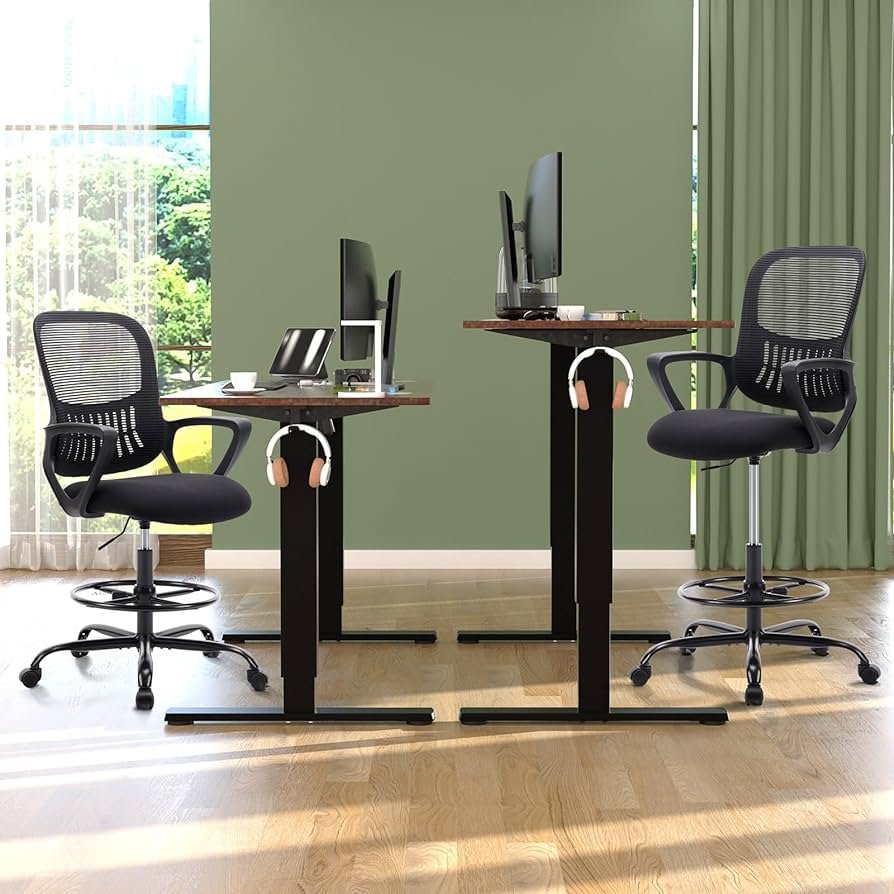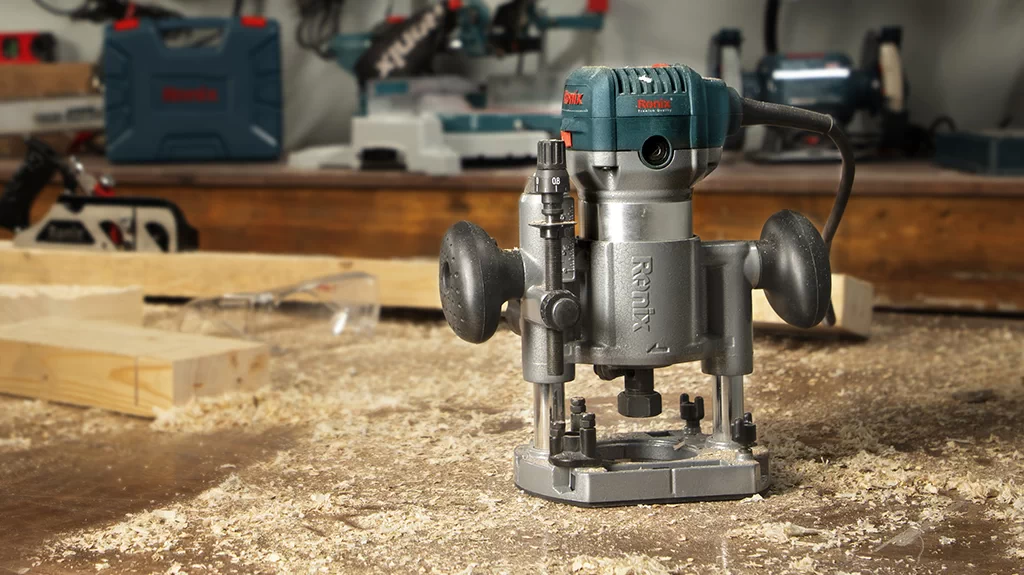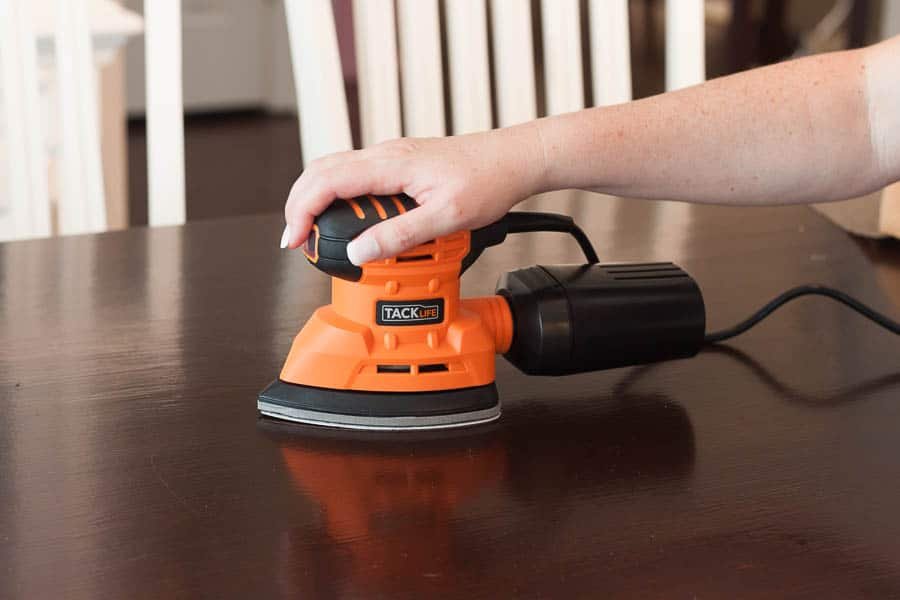In recent years, the integration of standing desks in office environments has seen a significant rise, driven by an increased awareness of the health risks associated with prolonged sitting. Alongside this trend, standing desk chairs, also known as perching stools or sit-stand chairs, have emerged as essential tools for enhancing workplace ergonomics.
These innovative seating solutions are designed to complement the use of standing desks, offering a versatile approach to maintaining comfort and productivity throughout the workday.
Standing desk chairs are specifically engineered to promote better posture and reduce fatigue. Unlike traditional office chairs, these chairs allow users to alternate between sitting and standing positions with ease. This flexibility helps in alleviating the strain on the lower back and legs, which is often a consequence of extended periods of standing or sitting.
By encouraging a more dynamic range of movement, standing desk chairs contribute to improved circulation and reduced muscle tension, fostering a healthier and more energized work environment.
One of the key benefits of using a standing desk chair is its potential to increase productivity. When individuals are able to adjust their posture and move more freely, they tend to experience less discomfort and distraction, leading to enhanced focus and efficiency.
Additionally, the ergonomic design of these chairs supports an active working posture, which can help in mitigating common issues such as back pain and repetitive strain injuries.
The growing popularity of standing desks is a testament to the modern workforce’s shift towards healthier and more sustainable work habits. As more people adopt standing desks, the need for complementary seating solutions has become increasingly apparent.
Standing desk chairs offer the perfect balance between mobility and support, making them an ideal choice for anyone looking to optimize their workspace for better health and performance.
Table of Contents
Key Features to Look for in a Standing Desk Chair
When selecting the best standing desk chair, it is crucial to consider several key features to ensure both comfort and effectiveness. One of the most important aspects is adjustability. A standing desk chair should offer height, tilt, and angle adjustments to accommodate various user preferences and body types.
Height adjustability ensures that the chair can be tailored to the user’s specific standing desk height, promoting better posture and reducing strain on the back and legs. The ability to tilt and adjust the angle of the seat allows for a more dynamic seating experience, encouraging movement and reducing the risk of static muscle fatigue.
Cushioning is another vital feature to consider. A well-cushioned standing desk chair provides necessary support and comfort during prolonged periods of use. High-density foam or gel padding can be particularly effective in distributing weight evenly, enhancing overall comfort, and preventing pressure points.
This feature is especially important for users who may transition between sitting and standing throughout the day.
Stability is also a critical factor in choosing the best standing desk chair. A stable chair ensures that the user feels secure, whether sitting or leaning. Look for chairs with a wide base and non-slip materials to prevent accidental tipping or sliding. This feature not only enhances safety but also contributes to a more confident and comfortable user experience.
Lastly, mobility should not be overlooked. A standing desk chair with smooth-rolling casters or easy-glide feet allows for effortless movement around the workspace.
This mobility is particularly beneficial in dynamic work environments where users may frequently shift positions or move between different workstations. Chairs that are easy to move can also contribute to a more flexible and adaptable workspace.
By prioritizing these key features—adjustability, cushioning, stability, and mobility—you can select a standing desk chair that significantly enhances ergonomics and overall user experience, making it an invaluable addition to any modern workspace.
Types of Standing Desk Chairs
When evaluating the options to find the best standing desk chair, it is essential to understand the various types available. Each type of standing desk chair offers unique benefits and potential drawbacks, catering to different user needs and preferences.
Below, we provide an overview of the most common types: leaning stools, saddle stools, wobble stools, and balance chairs.
Leaning stools are designed to provide support while allowing the user to maintain an upright posture. They typically feature a slanted seat that enables a semi-standing position, reducing strain on the legs and lower back.
The primary advantage of leaning stools is their ability to promote better posture while offering a break from full standing. However, they may not provide sufficient comfort for prolonged use.
Saddle stools take inspiration from horseback riding saddles and are designed to open the hips and position the spine in a natural curve. This type of chair encourages an active sitting posture, which can enhance core strength and reduce back pain.
While saddle stools are excellent for promoting spinal health, they may require an adjustment period for users unaccustomed to the unique seating position.
Wobble stools, also known as active stools, feature a rounded base that allows for a full range of motion. This dynamic design encourages constant micro-movements, which can help improve balance and engage core muscles.
Wobble stools are particularly beneficial for those who seek to incorporate more movement into their workday. Nevertheless, some users may find the continuous motion challenging to get used to.
Balance chairs, often equipped with stability balls or balance boards, aim to improve posture and build core strength by requiring the user to maintain stability. These chairs can enhance focus and concentration by promoting active sitting.
However, balance chairs may not be ideal for tasks requiring steady hand movements or prolonged periods of stillness.
In summary, each type of standing desk chair offers distinct advantages and potential drawbacks, making it crucial to consider personal comfort and work habits when selecting the best standing desk chair for your needs.
Top-Rated Standing Desk Chairs

The market for standing desk chairs has seen a surge in innovative designs and ergonomic features, making it easier than ever to find the best standing desk chair for your needs. Here, we provide a curated list of the top-rated standing desk chairs, incorporating key aspects such as brand, model, features, price range, and both customer and expert reviews.
1. Varier Move Stool
The Varier Move Stool is a standout in the category of standing desk chairs. Known for its tilting saddle seat, it promotes a dynamic sitting experience that encourages movement. Key features include a 360-degree rotating base, adjustable height, and a non-slip base.
Priced between $300 and $400, it has received high praise from users for its comfort and flexibility. Experts often highlight its ability to reduce lower back pain and improve posture.
2. Ergo Impact LeanRite Elite
The LeanRite Elite by Ergo Impact combines the benefits of a standing desk chair with those of a leaning stool. Its adjustable height, memory foam seat, and built-in anti-fatigue mat make it a versatile option. Retailing between $600 and $700, this model is favored for its extensive customization options.
Customers appreciate the ease of switching between sitting, leaning, and standing, while ergonomists commend its comprehensive support for various working styles.
3. SONGMICS Pro Balance Stool
SONGMICS Pro Balance Stool is an affordable option without compromising on quality. This chair features a wobble base that encourages active sitting, adjustable height, and a plush seat cushion. With a price range of $100 to $150, it’s praised for its value and effectiveness in promoting movement.
User reviews often mention improved core strength and better focus, while experts note its simplicity and effectiveness.
4. Aeris Swopper
The Aeris Swopper is renowned for its spring-loaded base, which allows for multidirectional movement. Its height adjustability and ergonomic design make it suitable for prolonged use. Priced between $700 and $800, it is considered an investment in long-term health.
Customers report significant reductions in back pain and increased energy levels, while professionals highlight its innovative design that keeps the body engaged throughout the day.
These top-rated standing desk chairs offer a range of features and price points to suit different needs and preferences. Whether you prioritize flexibility, budget, or comprehensive support, there’s a best standing desk chair out there for you.
How to Choose the Right Standing Desk Chair for You
Choosing the best standing desk chair involves careful consideration of several factors, ensuring that it aligns with your unique needs and preferences. The right chair can significantly enhance your comfort, productivity, and overall well-being. Here are some key elements to consider to make an informed decision:
Work Environment
First and foremost, assess your work environment. The nature of your job and the amount of time you spend seated or standing will influence your choice. If you frequently alternate between sitting and standing, a chair with adjustable height features will be beneficial.
Consider the space available in your workspace to ensure the chair doesn’t overpower the room or impede movement.
Budget
Budget is another crucial factor. Standing desk chairs come in a wide range of prices, from budget-friendly options to high-end models with advanced features. Determine how much you are willing to spend and look for options that offer the best value within your price range. Remember that investing in a quality chair is an investment in your health and productivity.
Body Type and Ergonomics
Your body type and ergonomic needs should guide your selection process. Look for chairs that offer adjustable features such as seat height, backrest tilt, and footrests to accommodate your body’s contours. Ergonomically designed chairs can help reduce strain on your back, neck, and legs, promoting better posture and comfort during prolonged use.
Health Considerations
Specific health considerations should also be a priority. If you have any pre-existing conditions like lower back pain or circulation issues, seek chairs that offer targeted support. Features like lumbar support, cushioned seats, and stability can make a significant difference in alleviating discomfort.
Checklist for Decision-Making
To simplify your decision-making process, here is a checklist:
- Evaluate your work environment and the chair’s compatibility with your workspace.
- Set a budget and explore options within your price range.
- Consider your body type and look for ergonomic features.
- Account for any specific health considerations you may have.
- Read reviews and seek recommendations for trusted brands and models.
By following this framework, you can select the best standing desk chair tailored to your individual needs, ensuring a healthier and more productive work experience.
Proper Usage and Maintenance Tips
To maximize the benefits of the best standing desk chair, it is crucial to use it correctly. Proper posture is essential to avoid discomfort and ensure long-term health benefits. When using a standing desk chair, maintain an upright position with your back straight and your shoulders relaxed.
Your feet should be flat on the floor, and your knees should be at a 90-degree angle or slightly lower than your hips. This ergonomic posture helps reduce strain on your spine and promotes better circulation.
Alternating between sitting and standing is recommended to prevent fatigue and muscle strain. Ideally, you should switch positions every 30 to 60 minutes. This approach allows different muscle groups to rest while others are engaged, promoting overall physical well-being.
If you are new to using a standing desk chair, start by standing for shorter periods and gradually increase your standing time as your body adapts.
The duration of standing versus sitting varies from person to person, but a common guideline is to aim for a 1:1 or 1:2 ratio of standing to sitting. Using a timer or reminder app can help you develop a routine that balances both positions effectively. Additionally, incorporating short breaks to stretch or walk around can further alleviate potential discomfort and enhance productivity.
To ensure the longevity of your standing desk chair, regular maintenance is essential. Clean the chair’s surface with a mild detergent and a soft cloth to remove dust and dirt. Check the chair’s mechanisms, such as height adjustment and swivel functions, periodically to ensure they are operating smoothly.
Lubricate any moving parts as needed, following the manufacturer’s instructions. Inspect the chair for any signs of wear and tear, such as loose screws or damaged upholstery, and address these issues promptly to prevent further damage.
By adhering to these usage and maintenance tips, you can enjoy the full benefits of the best standing desk chair while extending its lifespan. Proper posture, balanced usage, and regular upkeep are key to creating a comfortable and supportive work environment.
Real-life testimonials and case studies offer invaluable insights into the practical benefits of using the best standing desk chair in a variety of work environments. Individuals from different professions have shared their experiences, shedding light on both the challenges and the positive impacts on their health and productivity.
One such testimonial comes from Sarah, a graphic designer who spends long hours at her workstation. She stated, “Switching to a standing desk chair has been a game-changer for me. I used to experience severe lower back pain, but since incorporating this chair into my daily routine, my discomfort has significantly decreased. I also find that I have more energy throughout the day, which has boosted my creativity and efficiency.”
In another case, John, a software developer, highlighted the importance of choosing the best standing desk chair for maintaining focus and productivity. “Initially, I was skeptical about how a standing desk chair could make a difference.
However, after a few weeks of use, I noticed a remarkable improvement in my concentration levels. The ability to alternate between sitting and standing has made my workday much more dynamic and less monotonous.”
Healthcare professionals have also found value in these ergonomic solutions. Dr. Emily, a general practitioner, shared her experience: “As someone who spends a lot of time on patient records, I needed a solution that would alleviate the strain on my back and neck.
The standing desk chair I chose has been immensely helpful. It allows me to maintain a healthy posture and reduces fatigue, enabling me to be more present and attentive with my patients.”
Case studies from corporate environments further underscore the versatility of the best standing desk chair.
A leading marketing firm conducted an internal study and found that employees using standing desk chairs reported a 20% increase in overall productivity and a 15% reduction in reported musculoskeletal issues. This demonstrates not only the health benefits but also the potential for enhanced workplace performance.
These real-life examples illustrate the diverse advantages of integrating standing desk chairs into daily routines. Whether you’re a creative professional, a tech expert, or a healthcare provider, choosing the best standing desk chair can lead to tangible improvements in both health and productivity.
Conclusion and Final Recommendations
In navigating the array of options available, selecting the best standing desk chair can significantly enhance both your comfort and productivity. Throughout this guide, we have examined the critical features to consider, such as ergonomic design, adjustability, and build quality.
We have also highlighted the benefits of using a standing desk chair, which include improved posture, reduced back pain, and increased energy levels.
When choosing a standing desk chair, it is essential to evaluate your specific needs and work habits. Opt for a chair that offers ample support and encourages movement throughout the day. Ergonomic features like lumbar support, adjustable seat height, and a sturdy base are crucial for maintaining proper alignment and reducing strain.
Additionally, considering the material and durability can ensure a long-lasting investment in your health and comfort.
Incorporating a standing desk chair into your workspace can lead to a healthier, more dynamic work environment. By alternating between sitting and standing, you can alleviate the risks associated with prolonged sedentary behavior, such as cardiovascular issues and musculoskeletal disorders.
We encourage you to explore further and make an informed decision when selecting a standing desk chair. Investing in ergonomically designed office furniture is a proactive step towards a healthier lifestyle.
For more detailed reviews and comparisons, feel free to check our additional resources or related articles. Making this switch can positively impact your overall well-being and productivity, creating a more efficient and enjoyable work experience.









